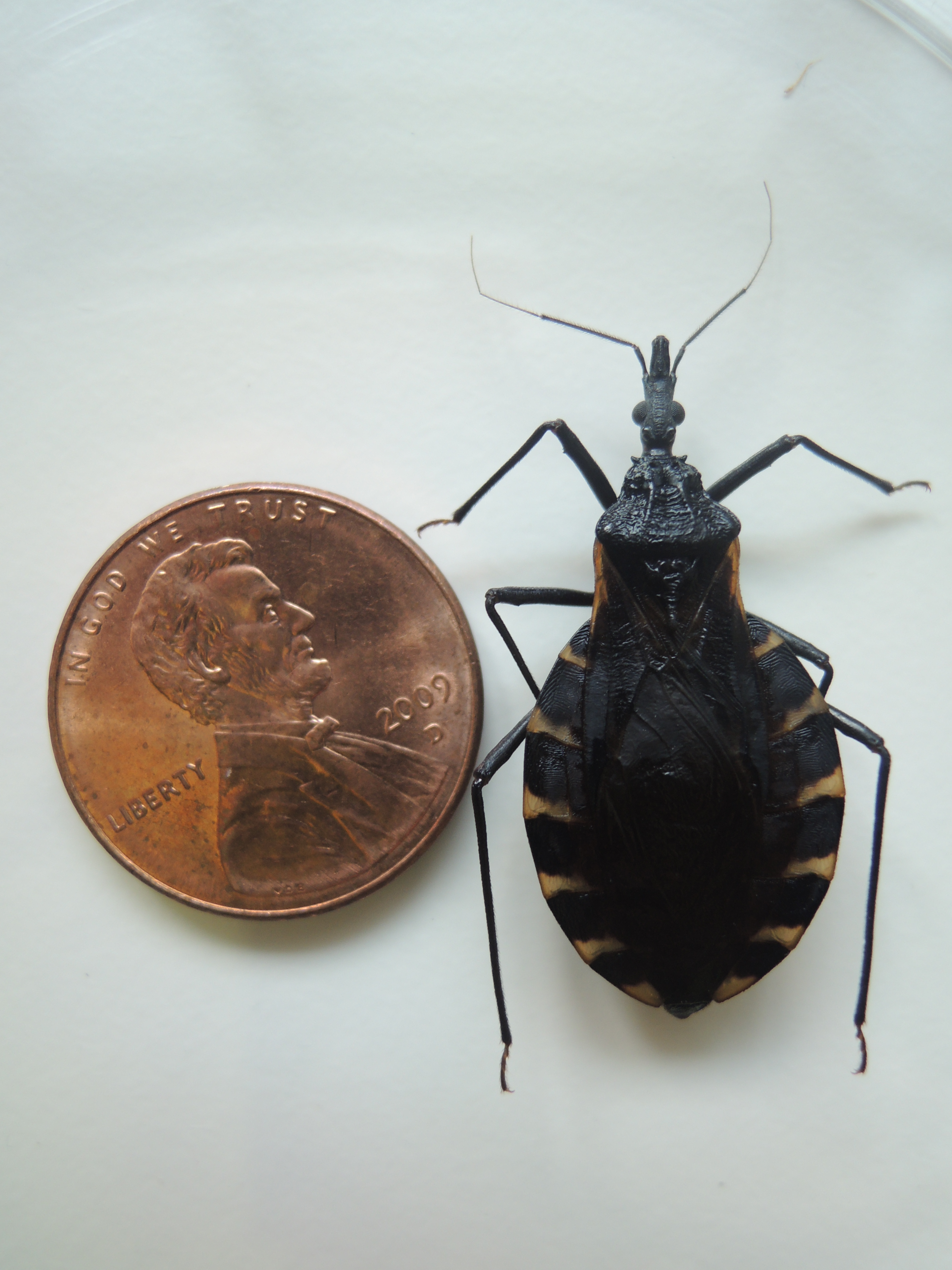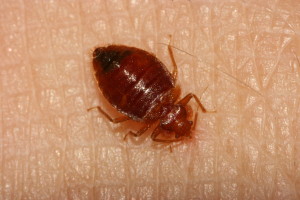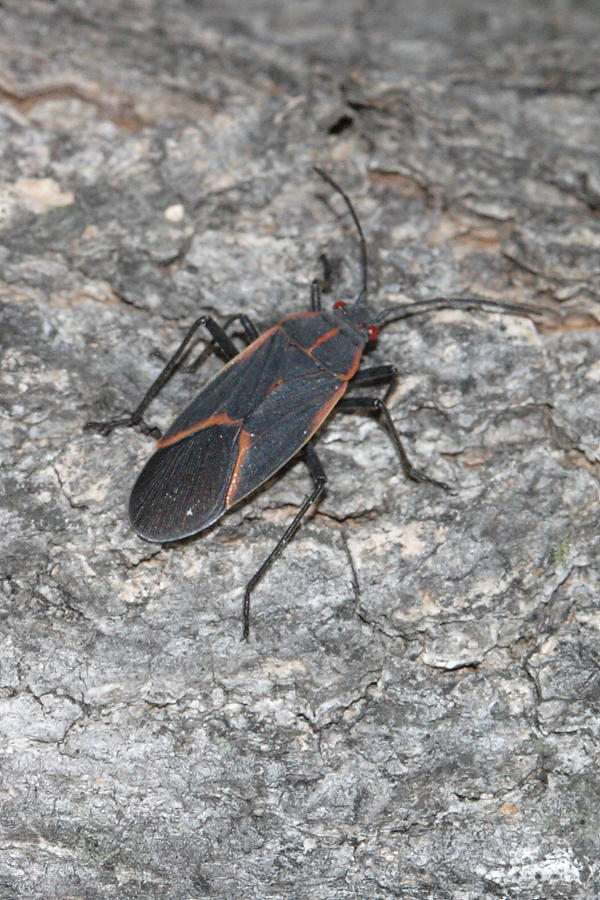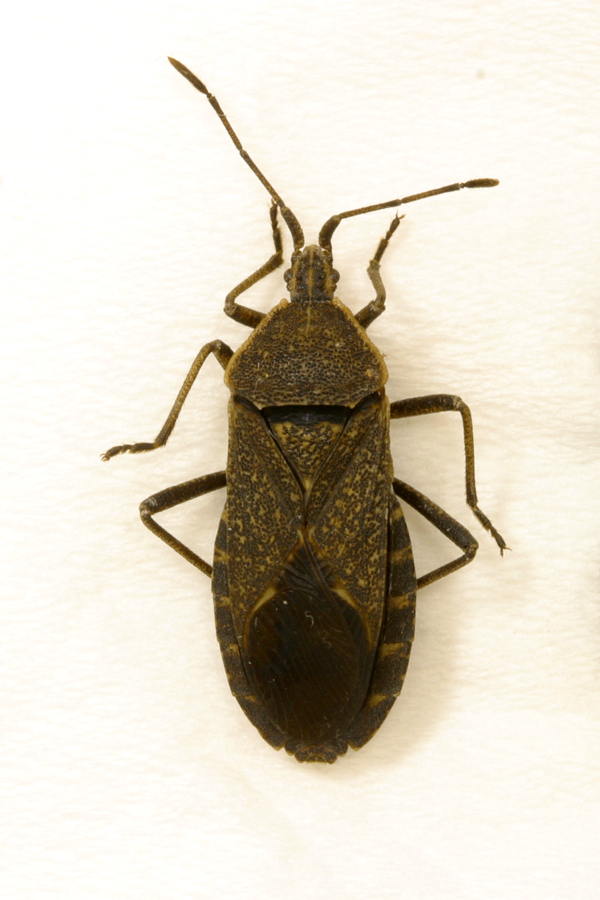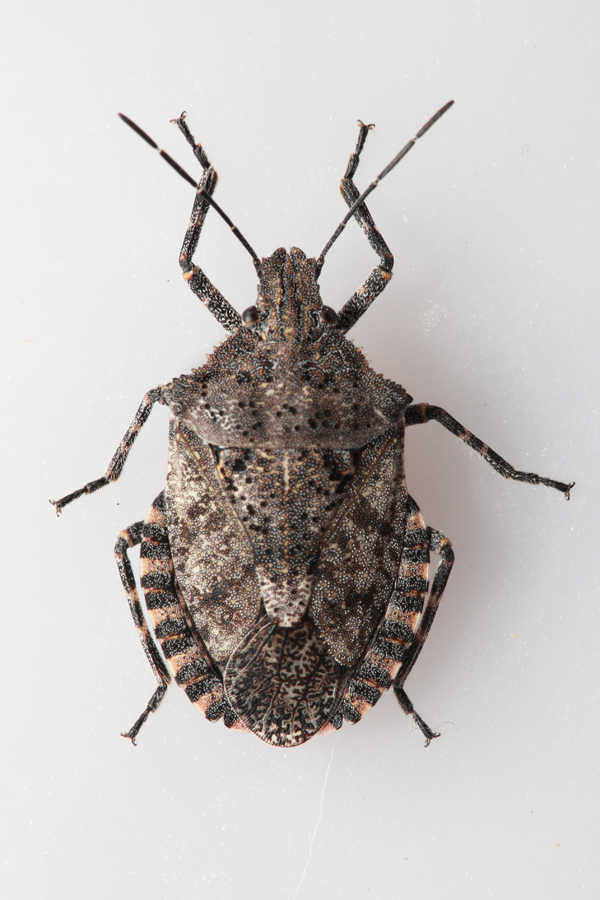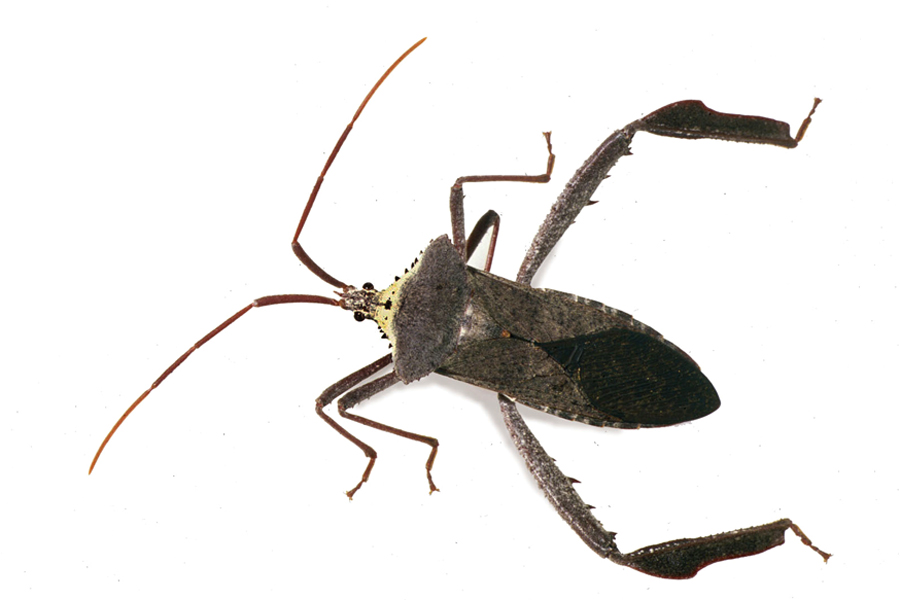Because most of us take little time to look closely at insects, it should not be surprising that recent television stories about “kissing bugs” and Chagas disease have created a frenzy of sorts among people thinking they have captured or seen kissing bugs around the home. While a few of these have turned out to be actual kissing bugs (genus Triatoma), most are not; and laboratories set up to identify and test kissing bugs have been overwhelmed this month with samples.
But not all insects vaguely resembling the pictures you might see on television or in the newspaper are kissing bugs. In fact, there are over 38,000 different kinds of insects in the “true bugs” suborder to which kissing bugs belong. So to make things easier, let’s review what to look for when a suspicious “bug” shows up in your home or landscape.

Triatoma head. Notice the straight tapering mouthparts under the head. Photo courtesy Alex Wild (www.alexanderwild.com)
All insects in the suborder Heteroptera, to which kissing bugs belong, have piercing sucking type mouthparts, as opposed to the chewing mouthparts found on most larger insects. Such mouthparts are visible from the underside of the body, and are relatively easy to see on the kissing bug–at least with a good handlens or magnifying glass. Unlike some other large bugs, which have very thin mouthparts pressed against the body (plant feeding bugs), or heavy curved mouthparts (most predatory bugs), the mouthparts on kissing bugs are stout and straight.
Adult, fully grown kissing bugs range in size from 1/2 inch to over 1 1/4 inches long (usually about 1 inch-long). They are pear-shaped and dark brown to black in body color, often with distinct, reddish- to cream-colored stripes visible along the edges of the abdomen (tail). There are no markings on the wings, although some kissing bugs may show some orange at the base of the wings, next to the shield behind the head.

Three of the different kinds of kissing bug found in Texas vary slightly in size and coloration, but share all the key characters of this genus. Photo courtesy Gabe Hamer, Texas A&M University.
The head is stick-like but tapering, with eyes bulging from the sides and bottom of the head. Besides “kissing bug”, these insects are often called “conenose bugs”.
The six legs are relatively thin and tapering, not swollen or bulging. There are no distinctive spines or spikes on kissing bug legs, sides or top.
While some insects may have some of these characters, only insects with all of these characteristics are likely to be kissing bugs. Add to this that kissing bugs come out mostly at night, and it shouldn’t be too difficult to distinguish kissing bugs from all other insects.
Common Imposters
Of course there are other insects that have some of the characteristics of kissing bugs. So lets look at a few.
For more pictures and information about kissing bug identification services offered by Texas A&M University, click here. For more information about kissing bugs, why they are a health concern, and how they can be managed, see our factsheet on conenose bugs.
